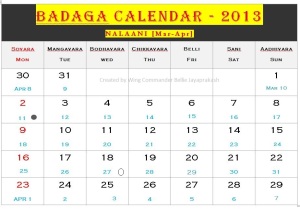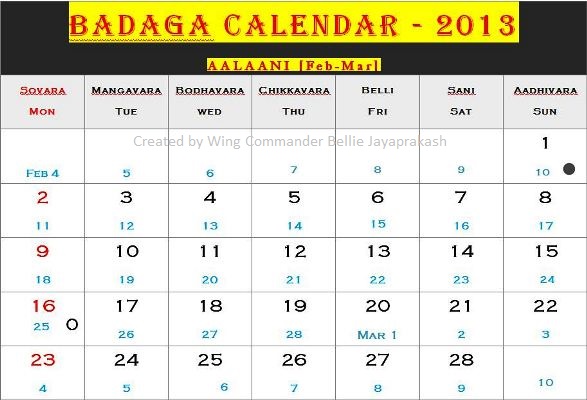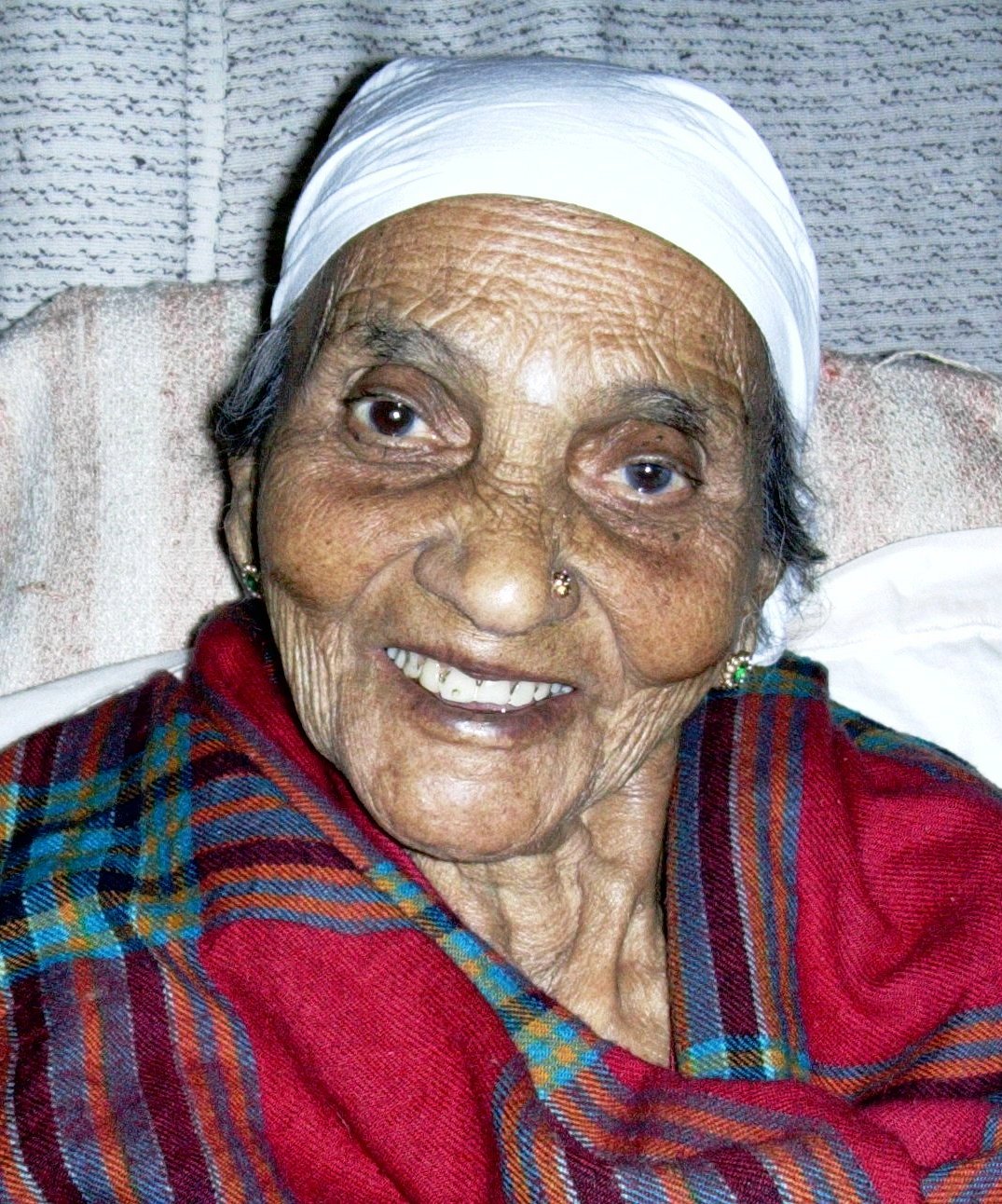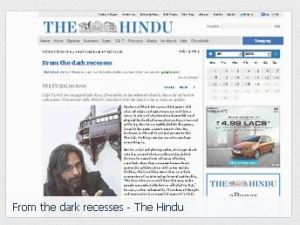When you mention 'Badaga', the immediate thing that comes to mind, is a small but unique community of people, living in the Nilgiri Hills, popularly known as the Blue Mountains, in South India. Undoubtedly, they are one of the original hill tribes like the Todas, Kothas or Kurumas. But the shear development in many social [and specially educational] fields by the Badagas in the last two hundred years or so, has made many researchers deny the tribal status. They, probably, are still stuck with the mind set that a tribe has to be shy, illiterate, undeveloped and living far away from the main stream population. Badagas do not fit into this groove.
Then, these 'learned' people, probably to get their doctorates, coined a new term - PRIMITIVE HILL TRIBES. It suited their purpose of not including Badagas in the PHT of the Nilgiris - Todas, Kothas, Kurumas and Erulas.
But a few of the old and 'original' researchers found enough and more in Badagas, 'in their origin, customs, rites, rituals. life style and language' to write and record extensively about them. I would give the maximum 'credit' to Professor Paul Hockings in this respect. The very fact that he is still writing many books on and about Badagas [his latest book will be published in a few months] shows his interest. - Wg Cdr JP
Badaga TRIBE
Dr.R.K.Haldorai,M.A.,M.Ed,M.O.L.,PhD [haldoraitamil@gmail.com] | |||
This article by Dr.Haldorai expresses his views about Badagas | |||

Tribe versus Caste
“Today we find no castes in Badaga society” (Hockings, Paul 2005:4)2.
Badagas were not under the influence of caste system in any part of their history. In caste system a person’s social status was determined by his occupation. Although caste depended upon a person’s occupation it became hereditary in due course. So, it is inevitable to a person to live with an unalterable particular social status throughout his life. The traditional association between caste and occupation is far from dissolution. Badagas apparently changed their occupations to suit the environment. They never developed intrinsic bond with any particular occupation. It is to be noted that the very name Badaga itself is not derived from any occupation. In India, most of the caste names are derived from occupations. Badagas major occupations were food gathering, honey collecting, hunting, buffalo rearing, millet cultivation (that too swift cultivation for some time) , cash crop cultivation etc., Among these a particular occupation was predominant at a particular time. And also all the sub groups of Badaga community engaged the same occupation. Badaga population was very small up to the beginning of the twentieth century and they spread
over the entire Nilgiri plateau. In that case, for a long period there were very few families in a haTTi (hamlet)3 and all the families were descended from a same forefather. So, there was a social compulsion to venture occupations in common. The origin of the caste system in India is shrouded, but it seems, it originated some two thousand years ago. Caste system is associated with religion and people were categorized by their occupations. Badagas’ religious beliefs were primitive in nature, so the religious side of their social organisation was lacking to originate caste system
jaati (caste) is used in India specifies a subdivision of a larger division varna (a concept based on colour or race). The varna concept is entirely unknown to Badagas. To uphold caste system the reincarnation belief played a major role. According to that belief after each life a soul reborn into a new material forms. Badagas’ inclination towards ancestor worship is so strong. They do not have belief in the past and future births and do not have any idea about karma theory. One of the religious beliefs of Badagas is that all the dead are there in a particular place near mallaaDu, a western part of the Nilgiris, in astral bodies and the person who is going to die will join with them.4
Unlike the varna system divorce and widow remarriage are prevalent among Badagas.
Badagas do not suffer from any stigma of the kind the depressed castes do.

Tribal council
The Badaga tribal council is so powerful and it exercises considerable control over the community. Among Badagas the elementary unit of society is the mane (family). Children are important part of mane and they are treated with kindness and indulgence irrespective of their sex. Badagas have another wider unit called kuDumbu (consists of few families). Once production of food was a corporate responsibility of the extended family and it was the function of mane to see that food was economically used. Each kuDumbu has a doDDamane (a ceremonial house) which gets importance during festivals, marriages, deaths etc., All the disputes among the family members are tried at kuDumbu assembly. Few such kuDumbus exist in a haTTi (hamlet). Each haTTi has a doDDamane (ceremonial or principal house) and a ‘manda’ (council).
The village ‘manda’(council) plays an important role in shaping the society with moral standards. It is headed by a headman called ‘gavuDa’. Each village had its headman, who is assisted by few elders and decided public matters such as disputes, differences etc., The village ‘manda’ is there as not mere council for deliberation, but acted as a strong organ of executive work. There are three levels of headmanships viz., gottugaara (headman of an hatti,hamlet), gauNDikke (headman of an uur, a larger area, mostly consists of few or more hatties ), gauDa (headman of a siime ). These hierarchic levels show how the system is vogue vigorously and systematically. Unresolved disputes at kuDumbu level come to the village assembly and then to uur and then to naakkubeTTa (tribal assembly). The Badagas are divided in four naaDus or districts and are ruled by gavuDas, tribal chiefs.
Religion
Badagas’ religion seems to have been one of the very primitive types, predominance with ancestral worship. Badagas consider their ancestral houses as their temples. Special rites are performed in their ancestral house twice or thrice a year. Any Badaga can act as a priest but among the clan agnates. The essential features of ordination are abstain from meat eating for few days, preparing himself for poojas like taking bath in stream, sleeping at temple etc. Places of worship of Badagas and nature co-existed beautifully. There are nearly no devotees on ordinary days. But on the occasion of festivals which falls yearly once large numbers of devotees turn up. Their ancestor is known as devva (corrupt form of deyvam). The festival of devva is also the harvest festival of Badagas celebrated alike throughout the community. devva festival is a living tradition in which almost everyone in the village participate making it a real social thread connecting the entire society. devva still remains untouched and is performed year after year with unprecedented pomp and splendour. Because of the universality, it is firmly rooted in the religious faith and tradition.
In Badaga tradition juvikiNDi (water jar), ele kannaaDi (bronze mirror), jegaNDe (bell) represent the very deity itself and these articles get pooja once in a year that too on devva festival. Except this festival days rest throughout the year these articles are kept in a hidden place at forest.
Goddess hette, a prominent deity, worshipped by the Badagas of Nilgiri hills, is in reality an ancestor that has been deified. hette is a popular deity of local origin. There are fourteen known hettes worshipped and numerous rites and ceremonies centring on propitiation of goddess hette.
Badagas claim no divine origin for their religious beliefs. Their customs are mostly pragmatic and relevant to their day to day life. Their marriage customs also do not reveal any supernatural underpinnings. Badagas observe pollution and ritual purity in limited ways. The religious activities of the Badagas are very limited. They themselves perform the rituals.
Clan
Badagas are scattered widely over the hills and their hamlets amount to nearly four hundred in number. The whole people are closely connected by totemistic clans and intermarriages. The Badagas are endogamous tribe divided into exogamous clans. The clans are correlated not only with exogamy but also with totemism. Residences being patrilocal, the Badagas are patrilineal people. Patrilineal descent (or agnate) is descending from an ancestor down through a series of male links. Breach of the rule of clan exogamy is regarded as highly dangerous in so far as it entails disastrous socio-religious consequences. Inheritance of property takes place only through the male line. Hence the Badaga clans furnish a good example of social organization based on clans. Badagas have fifteen totemism clans after animals or material objects. People of a clan are agnates and hettappa, a common ancestor is the binder among a clan. The tribal scenario of India shows the prominent example of the clans. In consonance with that Badaga maintains its own exogamous clans through the ages. It is the exogamous character of a clan that makes it a distinctive group. Marriage is one of the causes for kinship relation.
According to F.Metz (1864) the Badagas recognise eighteen classes, each of which has its own peculiar characteristics. S.M.Natesa Sastri (1909) simplifies this into six septs. Paul Hockings (1980) identifies sixteen totemic clans among Badagas. They are 1. sooriya kola, 2.sandira kola,3. baraTa kola,4. brammma kola,5. beLLi kola, 6.selandi kola, 7.kooveeru kola,8. madure kola,9. kastuuri kola,10. mallige kola,11. anniya kola,12.maari kola, 13.madave kola,14. maaNikka kola,15.naaga kola and 16. saamandi kola. Totem and exogamous divisions do co-exist and totem is primary. It is obvious that the clans are the major criterion for identifying the Badaga groups and their totemic identifications also once popular.
Culture
Badaga culture was evolved in the Nilgiri hills and mainly under the stimulus of the Dravidian environment. Badagas had earned a reputation of being peace loving people as well as diligent workers. The nature of their hospitality is praised whoever had a chance to contact them. The hospitality of Badagas is unparalleled anywhere in India. Any family, however poor, will not allow you to leave without having at least a cup of tea.
Badaga funeral ceremony is complex. They consider performing the funeral of their kin, especially of elders is most important one and they tried to perform the funerals in traditional order with utmost care.
Badagas have their own lunar and solar time reckoning calendar.5 They are using their own instruments to measure grains.6Their food habits and recipes still hold distinctive character.
Badaga wedding is relatively simple with fewer rituals. As soon as bride enters to the bridegroom’s house with a pot full of water, the wedding got over. In olden days even the garland exchanging rituals between couple was not vogue. As per their tradition, the wedding costume is not grand. Simple white clothes are used for the wedding ceremony. Women have prime importance in wedding ceremonies. The mother-in-law welcomes her daughter-in-law by offering water for cleaning her feet. Dowry is unknown in Badaga marriage .They perform their own traditional rituals on puberty, house warming, birth etc.,
The un-sewn white garments worn by men and women vary widely from others and it stood as fundamental ingredients of cultural ethos.
Badagas evolved from humble family background. As one of the primitive traits the shyness of contact with the public at large is seen with them even today.
Folk-culture is so strong in the land. There is an unrecorded vast folk culture found in Badaga land. In fact this is the real treasure of this simple people. The roots of Badaga culture lie in its folklore. The fables of this peace loving people are inspiring. The songs and dance are enchanting. It has been a part of their lives unknowingly. The interesting part is, in Badaga dance that is not just the audience who enjoy the show the participants did as well. Dancing and singing were considered pastime for this tribal community. Badaga dance is in itself unique and interesting. Normally it falls into a pattern 1-2-3 steps. And then, they have to move according to the co-dancers. The music too represents the theme of rural life.
The popular game among the Badagas was hagaru, in which one bats a ball with a bat and others run and catch.
Badagas have their own tribal medicinal system.
Badagas have the system of patrilineal family descent. The lineage group is extended to include all those to be related through common descent forms a clan. Badagas have the tradition of naming their children with the names of their own grandparents. Due to this the proper names like booja, beLLa, kuLLa, kaaDe, maasi, micci etc., were so common among Badagas. In this way they paved the way to know the names of their ancestors up to the very ancient times.
Language
Badagas have a distinctive language of their own and it belongs to the Dravidian family of languages. The Badaga language is a dominant spoken language of the Nilgiri hills of Tamil Nadu. Although Badaga language is considered as uncultivated because of its lack of writing system and literature, it fully serves the purpose of Badagas. Study of the Badaga language is important from the point of view of the culture, habits and social attitudes of the Badagas. In Tamil Nadu, next to Tamils Badagas are the second largest linguistic group who speak indigenous language of the state. Badagas are unadulterated by outside influence for a long period. They retain many old and distinct features. Due to this Badaga language preserves many words that are archaic in Dravidian languages. A careful study of the Badaga words reveals to us much of the life and thought of the ancient Badagas. Language is a powerful mode of transmission of cultures. So the language factor is also a basic factor for considering tribal status. Most of the tribes in India are bilinguals. But as an exception to this Badagas were monolinguals comparatively for a longer period. Once lingua franca of the Nilgiris plateau was Badaga and there was no major language within their reach. However bilingualism is seen with the present generation.
Foot-note
1. David W.McAlpin, 1981, Proto-Elamo-Dravidian, The evidence and its Implications ,The American Philosophical Society, Philadelphia.
2. Hockings, Paul, 2005,Badaga Kinship rules in their socio-economic context, Anthropos vol-77, HRAF Publication Information, New Haven Conn
Hockings,Paul is a well known Anthropologist who did extensive study on Badaga.
3. The name haTTi derives the old world paTTi which means cattle (buffalo) pen.
4. This belief is expressed apparently in one of their death ceremonies called ‘battaarsikkoodu’(praying with saamay).In that ritual an elder agnate recites as ‘indu satta aNNa or tamma or ...beTTuno, peeruno, gumbuno, goDano elli iddaleyu jaati janava kooDa seerali endu battaarsikkiniyo(The dead one may wander around a hill or in a marshland or in a thicket or in a gorge. Wherever he/she is, we pray for his/her safe journey to join with his/her people). The ballads like koolitippe and haTTitippe narrate this concept elaborately.
5. kuuDalu, aalani, nallaani, aani, aadire, peeraaDi, aavaaNi, perattaadi, doDDadiivige, kirudiivige, tay, and emmaaTTi are Badaga months.
6. maana (half litre), paDi (two mana), kooga (five paDi ), makkiri (four kooga or twenty paDi), kaNDuga (twenty kooga or five makkiri), balla (four kaNDuga or twenty makkiri).
















 Photos: Sreenivasa Murthy V.
Photos: Sreenivasa Murthy V.













